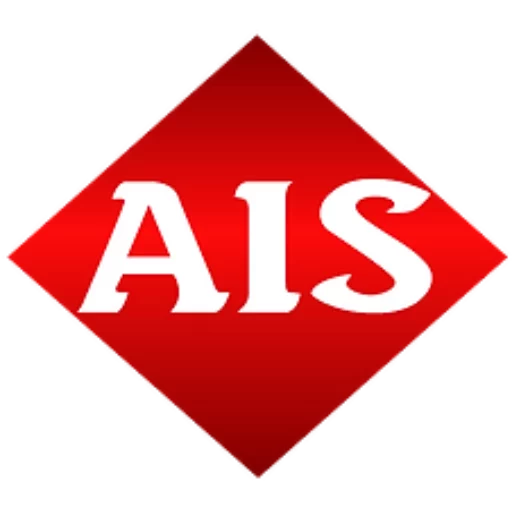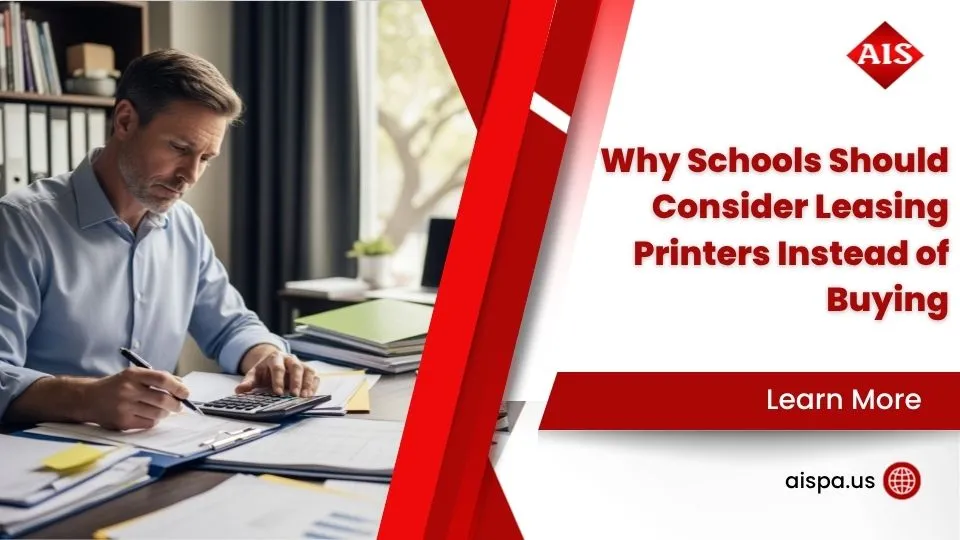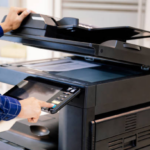Copier Leasing for Small Businesses – A Practical Guide to Smart Choices
A small business copier lease offers predictable monthly payments, included maintenance, and access to advanced technology without the large upfront investment of purchasing equipment outright.
Quick comparison for small businesses:
- Lease costs: $70-$350/month depending on features and volume
- Typical terms: 36-60 months with Fair Market Value or $1 buyout options
- What’s included: Equipment, maintenance, toner, and technical support
- Best for: Businesses printing 1,000-10,000+ pages monthly who want to preserve cash flow
Modern copiers have evolved far beyond simple document reproduction. Today’s multifunction devices handle printing, scanning, faxing, and cloud integration – making them essential productivity tools for growing businesses.
The choice between leasing and buying often comes down to cash flow management. As one office manager noted in our research, leasing allows businesses to “avoid a large upfront investment, with monthly payments that are easier to budget for than a cash purchase.”
Most small businesses choose leasing because it transforms a major capital expense into a predictable operating cost. With 85% of commercial copiers being leased rather than purchased, this financing method has become the industry standard.
The key is understanding your options. Fair Market Value leases offer lower monthly payments with flexibility at lease end, while $1 buyout leases function more like financing agreements with guaranteed ownership.

How Copier Leasing Works: The Basics
Think of a small business copier lease like getting a reliable company car – you make monthly payments, get professional maintenance, and can upgrade when your needs change.
The beauty of leasing lies in its simplicity. You’re paying for the right to use high-end equipment without the headache of ownership. No massive upfront costs, no worrying about repairs, and no getting stuck with outdated technology.
What Is a Copier Lease?
A copier lease is your gateway to professional-grade equipment without breaking the bank. Instead of writing a check for $8,000-$15,000 upfront, you spread that cost over 36 to 60 months with predictable monthly payments.
You become the lessee (the business using the equipment), while the leasing company becomes the lessor (they own the copier and rent it to you). Your monthly payments cover the equipment cost, interest, and often maintenance services too.
Most lease agreements bundle everything together. You get the copier, regular maintenance visits, repairs when needed, and sometimes even toner supplies. It’s like having your own IT department for document management, but without the overhead.
The real magic happens in your cash flow. Instead of a major capital expense hitting your books all at once, you get a predictable operating expense that’s much easier to budget around.
Fair Market Value vs. $1 Buyout
Two main paths lead to copier leasing success, and choosing the right one depends on your business goals.
Fair Market Value (FMV) leases are perfect for businesses that love flexibility. Your monthly payments stay lower because you’re not financing the entire equipment value. When your lease ends, you have three options: return the copier with no strings attached, buy it at current market value (usually 10-15% of original cost), or upgrade to the latest technology.
$1 buyout leases work more like a financing agreement. Your monthly payments run higher, but you’re building toward ownership from day one. When the lease ends, you own the copier for just one dollar.
FMV leases typically offer monthly payments about 15% lower than $1 buyout options. For a business watching every dollar, that difference can really add up over three to five years.
The choice comes down to this – do you want lower payments with flexibility, or higher payments with guaranteed ownership?
Typical Lease Durations & Renewal Clauses
Most businesses find their sweet spot with lease terms of 36, 48, or 60 months. The 60-month option wins popularity contests because it delivers the lowest monthly payments while keeping your copier current throughout the entire lease period.
Evergreen clauses can sneak up on you like that gym membership you forgot to cancel. These automatic renewal provisions kick in if you don’t provide proper written notice before your lease expires.
Most leases require 90 to 180 days written notice to avoid rolling into a new term at potentially higher rates. Smart business owners mark their calendars 120 days before lease expiration. It gives you breathing room to evaluate your options – whether that’s returning the equipment, negotiating a buyout price, or upgrading to newer technology.
Understanding Your Copier Lease Agreement: What You Need to Know
Small Business Copier Lease: Pros, Cons & Real Costs
Making the right choice about copier financing requires weighing both the compelling benefits and potential pitfalls. While a small business copier lease offers immediate advantages for cash flow and operations, the complete picture includes some costs that aren’t always obvious upfront.
Advantages of a Small Business Copier Lease
Cash flow preservation ranks as the biggest win for most businesses. Rather than writing a check for $6,000-$50,000 upfront, you keep that capital available for revenue-driving activities – inventory, marketing campaigns, or key hires. Growing businesses especially appreciate having cash on hand for unexpected opportunities.
Predictable monthly expenses make budgeting much simpler. Fixed payments mean no surprise repair bills showing up when cash is tight. Most lease agreements bundle service and supplies into that monthly payment, so you know exactly what to expect.
Built-in maintenance coverage eliminates the headache of finding qualified technicians or dealing with parts sourcing. When something breaks, you make one phone call and it gets fixed – usually at no additional cost.
Technology upgrades happen naturally with leasing cycles. Instead of nursing a seven-year-old copier that jams constantly, you get access to newer models with better features, faster speeds, and improved reliability.
Tax advantages can be meaningful, since lease payments typically qualify as deductible operating expenses. This often provides better tax treatment than the depreciation schedules you’d face with purchased equipment.
Disadvantages & Hidden Costs
Higher long-term costs represent the trade-off for all those benefits. Over time, leasing generally costs more than buying outright, especially if you use equipment until it falls apart. Our research shows purchased copiers average 78 months of use compared to 42 months for leased units.
Several hidden fees can catch you off guard. Insurance surcharges of 6-8% get added to monthly payments unless you add the leasing company to your existing business policy. Return shipping costs of $400-$800 hit at lease end. Lease initiation fees of $70-$135 appear in the fine print, and many maintenance agreements include annual increases of up to 10% unless you negotiate rate locks upfront.
Usage restrictions can become problematic for growing businesses. Some leases include monthly page allowances with overage charges that penalize success. If your business takes off and you’re suddenly printing twice as much, those extra pages add up quickly.
Contract obligations create long-term commitments that don’t always bend with changing business needs. Early termination fees and rigid terms can feel restrictive if your business pivots or downsizes unexpectedly.

Matching Lease Costs to Your Needs: Features, Volume & Service
Getting your small business copier lease right means understanding exactly what your business needs – not what a salesperson thinks you need. The sweet spot is finding equipment that handles your workload efficiently without paying for bells and whistles you’ll never use.
Estimating Monthly Print Volume
Your current printing habits tell the whole story. Pull up those usage reports from your existing printer or take a realistic look at how much your team actually prints. Most office workers go through about 150-300 pages monthly, but don’t just multiply by headcount – some people print constantly while others barely touch the machine.
Growth planning matters more than you think. If you’re adding staff or expanding services, bump up your estimates by 20-30%. It’s much better to have extra capacity than to get hit with overage charges or watch your copier struggle under the load.
Duty cycles aren’t just technical jargon – they’re your equipment’s comfort zone. A copier rated for 80,000 pages monthly will start showing its age quickly if you’re consistently pushing 70,000 pages through it. You need breathing room for reliability.
Peak periods can make or break your choice. Monthly reports, quarterly mailings, or seasonal rushes create printing spikes that matter more than your daily average. Make sure your equipment can handle these busy times without breaking down or slowing to a crawl.

Feature Checklist for Growing Teams
The must-haves aren’t negotiable for most growing businesses. Duplex printing saves paper and looks professional. Scanning with email integration eliminates the “scan to USB, walk to computer, email file” dance. Secure printing means sensitive documents don’t sit in the output tray for everyone to see – employees enter a code at the machine to release their jobs.
Mobile printing capabilities have become essential. When your team can print directly from phones and tablets, productivity jumps. Network connectivity with solid security keeps everything running smoothly without creating vulnerabilities.
Advanced features pay for themselves in the right situations. Finishing options like stapling and hole punching matter if you’re constantly preparing presentations or reports. Large paper capacity reduces the “load paper” interruptions that drive everyone crazy. Color capabilities make sense if you’re producing marketing materials in-house rather than outsourcing everything.
Security features deserve serious attention. With 61% of organizations reporting print-related data breaches, features like user authentication and encrypted storage aren’t luxury add-ons – they’re business protection. Document management integration with your existing software systems can streamline workflows significantly.
Understanding Service & Maintenance Charges
Per-copy billing keeps things simple – typically 1-2 cents per black and white page and 6-9 cents per color page. This covers toner, maintenance, and repairs, though you’ll still buy your own paper. It’s straightforward pricing that scales with your actual usage.
All-inclusive agreements bundle everything into one monthly payment, which sounds convenient until you realize you might be paying for usage you don’t actually generate. These work well for businesses with consistent, predictable volumes but can be expensive if your printing varies significantly month to month.
Response time guarantees matter when your copier decides to take an unscheduled vacation. Next-business-day service is standard in most metropolitan areas, but rural locations might wait longer. Factor this into your decision – downtime costs money.
Toner inclusion varies wildly between agreements. Some leases include all supplies while others charge separately for everything beyond basic maintenance. Make sure you understand what’s covered before signing, and factor these costs into your total lease expense calculations.
10 Tips for Choosing the Right Printer Leasing Company
Negotiating & Managing Your Small Business Copier Lease
Getting the best deal on your small business copier lease starts with understanding that almost everything is negotiable. Many business owners accept the first offer they receive, but smart negotiation can save thousands of dollars over your contract term.
Leasing companies want your business – they’re often willing to adjust terms to close the deal.
Key Clauses to Negotiate on Day One
Annual rate increases should be your first target. Many standard agreements include automatic 10% yearly bumps that compound over time. A $200 monthly payment becomes $266 by year three with these escalators. Simply crossing out these clauses or negotiating a rate lock for the entire term can save significant money.
Separate your maintenance from equipment costs whenever possible. This gives you flexibility to shop around for service providers or adjust coverage levels without affecting your equipment payments.
Performance guarantees protect your business from equipment headaches. Specify minimum uptime requirements – like 95% availability – and what happens if the copier doesn’t meet manufacturer specifications. This might include free equipment replacement or monthly service credits.
Installation and training costs often appear as surprise charges. Negotiate these services into your base agreement upfront. Setup fees can easily run $300-500 if charged separately.
Cancellation provisions matter more than you might think. Life happens – businesses relocate, downsize, or change direction. Understanding your options for early termination or mid-term modifications saves headaches later.

Can You Upgrade Mid-Lease?
Business growth often outpaces your initial equipment needs. The good news? Mid-term upgrades are frequently possible, especially with established vendors who value long-term relationships.
Most leasing companies will consider equipment swaps when you have less than 24 months remaining on your current lease. They’ll typically buy out your existing agreement and apply the remaining balance toward new equipment.
Volume growth scenarios actually strengthen your negotiating position. If you’ve doubled your monthly page count since signing, vendors see you as a valuable customer worth retaining. They’d rather upgrade your equipment than lose you to a competitor.
Technology refresh opportunities naturally align with lease cycles. Planning your upgrade path 6-12 months before lease expiration gives you maximum leverage and time to evaluate options.
Tax & Accounting Impacts
The tax treatment of your lease can significantly impact its true cost. Operating expense treatment for true leases allows you to deduct monthly payments immediately, simplifying your accounting and potentially providing better cash flow benefits than depreciation schedules.
Section 179 deductions may apply to certain lease structures, particularly $1 buyout arrangements that qualify as financing agreements rather than true leases. These can allow immediate deduction of the equipment’s full value, subject to annual limits.
Working with your accountant before signing ensures you structure the lease for maximum tax benefit. The difference between operating lease and capital lease treatment can be substantial for some businesses.
What to Look for When Leasing a Copier
End-of-Lease Strategies & Next Steps
As your small business copier lease nears its end, smart planning 90-120 days ahead can save you money and prevent operational disruptions. The choices you make now will impact your business for years to come.
Return, Renew or Purchase?
When your lease expires, you’ll face three main options, each with distinct financial implications. Understanding these choices helps you make the best decision for your business situation.
Fair Market Value appraisals determine what you’ll pay if you decide to buy your leased copier. These buyout costs typically run 10-15% of the original equipment price, though the actual amount depends on current market conditions and how well you’ve maintained the equipment. A copier that originally cost $15,000 might have a buyout price of $1,500-$2,250.
$1 buyout payments make ownership simple – you pay the nominal dollar amount specified in your lease agreement and the copier is yours. This straightforward approach works well if you’re happy with your current equipment and expect to use it for several more years.
Month-to-month extensions give you breathing room while you evaluate your options. This flexibility comes at a cost, though – monthly rates are typically 25-40% higher than your original lease terms. Think of this as short-term insurance while you plan your next move.
Equipment return requirements involve more than just calling for pickup. You’ll need proper packaging (often the original boxes), arrange freight shipping, and sometimes hire professional data wiping services. Budget $400-$800 for return shipping costs, depending on equipment size and your location.
Data Security & Device Wipe
Modern copiers store far more information than most business owners realize. Every document you’ve copied, scanned, or printed may still exist on the device’s hard drive, along with user credentials and network settings.
Hard drive erasure isn’t optional – it’s essential for protecting your business and customer information. Simply deleting files isn’t enough; professional-grade data destruction ensures information can’t be recovered by the next user.
Compliance requirements vary by industry, but the stakes are high across the board. Healthcare practices must meet HIPAA standards, financial firms face strict regulatory oversight, and even general businesses risk lawsuits if customer data is compromised. With 61% of organizations reporting print-related data breaches, this step deserves serious attention.
Professional wiping services cost $100-$300 but provide documented proof of proper data destruction. This documentation becomes valuable if you ever face regulatory audits or need to demonstrate compliance efforts. Many leasing companies offer this service, or you can hire independent data destruction specialists.

Planning Your Next Lease Cycle
Your business has likely changed significantly since you signed your current lease. Taking time to reassess your needs ensures your next agreement serves you better.
Volume reassessment reveals how your actual usage compares to original estimates. Many businesses find they’re paying for capacity they don’t need, while others find they’ve outgrown their current equipment. Pull actual page counts from your copier’s usage reports to get accurate data for planning.
Technology roadmap planning considers where your business is headed. Are you implementing new software that requires better scanning capabilities? Planning to hire remote workers who need mobile printing access? Expanding into color marketing materials? These changes should influence your equipment selection.
Vendor performance review honestly evaluates your current service experience. How quickly do they respond to service calls? Are technicians knowledgeable and professional? Do they proactively suggest improvements or just fix problems? Your next lease decision should factor in both equipment needs and service quality expectations.
The transition between leases offers a perfect opportunity to negotiate better terms, upgrade technology, or switch to managed print services that provide more comprehensive document management support.
Frequently Asked Questions About Small Business Copier Lease
When considering a small business copier lease, you probably have questions about costs, flexibility, and what happens when your lease ends. These are the most common concerns we hear from business owners every day.
How much does it cost to lease a copier for a small business?
The monthly cost for your copier lease depends heavily on your business size and printing needs. Basic black and white copiers perfect for smaller offices start around $70-$100 monthly. These entry-level machines handle everyday printing and copying for teams under 10 people, with maintenance and basic service included.
Mid-range color copiers represent the sweet spot for most growing businesses. Expect to pay $200-$350 monthly for machines that serve 10-30 employees. These include the features most businesses actually use – duplex printing, scanning to email, network connectivity, and mobile printing support.
High-volume machines can reach $600-$1,000 monthly, but they’re designed for businesses with serious printing demands. These include comprehensive service agreements and advanced finishing capabilities like stapling and booklet creation.
Service add-ons can increase your monthly payment by $30-$100. Extended warranties, premium toner programs, or improved support coverage fall into this category. The good news? Most standard leases already include what you need.
Your lease term makes a real difference in monthly costs. Choosing a 60-month term over 36 months can reduce your monthly payment by 20-30%, though you’ll be committed to the equipment longer.
Can I upgrade or change machines during the lease term?
Yes, mid-term upgrades are often possible, especially when you’re working with a vendor who values long-term relationships. The process typically involves calculating your remaining lease balance and applying it toward new equipment.
Growing businesses frequently need upgrades partway through their lease. If your printing volume has doubled or you’ve added staff, most vendors will work with you on an equipment swap. Nobody wants you struggling with an undersized machine that can’t handle your workload.
Every vendor handles upgrades differently. Some actively encourage mid-term swaps as a way to keep customers happy, while others prefer you complete your full term. This is definitely worth discussing before signing your initial agreement – it could save you headaches later.
The key is maintaining a good relationship with your leasing company. When they see you as a valued long-term customer rather than just a contract, they’re much more willing to accommodate changes.
What happens at the end of the lease?
Your end-of-lease options depend on the lease structure you chose initially. Fair Market Value leases give you three choices: return the equipment, purchase it at fair market value (typically 10-15% of the original cost), or upgrade to newer technology.
$1 buyout leases are simpler – you own the copier for the nominal dollar fee specified in your contract. This makes sense if you planned to keep the equipment long-term.
Equipment return requires some planning. You’ll need to provide 90-180 days written notice, arrange professional packaging, and handle freight costs. Budget around $400-$800 for return shipping – it’s not cheap, but it’s predictable.
Watch out for automatic renewals. Many lease agreements include evergreen clauses that extend your contract if you don’t provide proper notice. Missing this deadline could lock you into another year at potentially higher rates.
The smart move? Mark your calendar 120 days before lease expiration to start planning your next steps. Whether you’re returning equipment, negotiating a buyout, or upgrading to the latest technology, having time to make thoughtful decisions always works in your favor.
Conclusion
A small business copier lease can transform how you manage both cash flow and office productivity when you approach it with the right knowledge. The secret lies in understanding your actual needs, negotiating smart terms from day one, and planning ahead for what happens when your lease ends.
The financial benefits speak for themselves – you preserve precious cash for growing your business while enjoying predictable monthly payments that make budgeting a breeze. Included maintenance means no surprise repair bills, and regular technology upgrades keep your office running on current equipment rather than outdated machines.
But here’s what we’ve learned from helping hundreds of Pennsylvania businesses: the devil is definitely in the details. Hidden fees can sneak up on you, automatic renewal clauses can trap you into unfavorable terms, and poor end-of-lease planning can cost thousands in unexpected charges.
The most successful lease arrangements happen when business owners do their homework upfront. This means accurately estimating your print volume, negotiating away those sneaky annual increases, and marking your calendar well before lease expiration to avoid automatic renewals.
From our experience serving businesses across Pennsylvania – whether you’re a busy law firm in Philadelphia, a growing manufacturing company in Pittsburgh, or a healthcare practice anywhere in between – the right small business copier lease becomes an invisible part of your operations. It just works, month after month, supporting your team without creating headaches.
Local expertise makes a real difference in navigating these decisions. We understand Pennsylvania business needs, local service requirements, and how to structure agreements that actually benefit your bottom line rather than just looking good on paper.
Ready to explore how copier leasing might work for your business? We combine decades of industry knowledge with genuine local service to help you make decisions that support your growth while protecting your cash flow.











